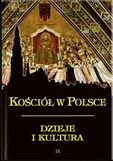Zaangażowanie patriotyczne zakonników franciszkańskich prowincji Niepokalanego Poczęcia NMP w Polsce
PATRIOTIC INVOLVEMENT OF FRANCISCAN FRIARS OF THE PROVINCE OF THE IMMACULATE CONCEPTION OF THE VIRGIN MARY IN POLAND
Author(s): Wiesław MurawiecSubject(s): History
Published by: Katolicki Uniwersytet Lubelski Jana Pawła II - Wydział Teologii
Keywords: History of Franciscans; the ministry of Franciscans; the missionary’s work of Franciscans; patriotic engagements of Franciscans; scientific and cultural activities of Franciscans
Summary/Abstract: The positive opinion of the patriotism of Bernardine Friars in the 19th Century was based less on learned texts than on popular literature. Principally on Mickewicz’s national epic “Pan Tadeusz” and “Dziady” part III. There was also glorification of Bernardine patriotism and martyrdom in the fine arts, particularly in painting from the period of the January Rising. (A. Grottger, “Closing Churches in Warsaw”). We have some information concerning the participation of friars from 16 Bernardine monasteries in the November Rising of 1830. On the basis of the number of people involved, the Warsaw monastery takes prime position, although other large monasteries made comparable contributions. The nation’s enthusiasm for the rising was shared by Bernardine friars. As in other churches, so in theirs, services were held for the fatherland, the fallen in risings and, at every occasion, solemn and patriotic homilies were preached. Before the January Rising, in 1861 both diocesan and monastic clergy closed all of Warsaw’s churches and chapels in protest against Russian profanation. In solidarity with the Catholic clergy, pastor Leopold Otto of Warsaw’s Evangelical Church and Warsaw’s Rabbis Ber Meisels, Isaak Kramsztyk and Markus Jastrow closed the Evangelical church and Warsaw’s synagogue. Testimony to the participation of friars in National Risings in 19th century is the fact that frequently monasteries served as stores of weapons and uniforms for the freedom fighters. Friars recruited volunteers into the ranks of the risings. Monasteries were centres attracting the most patriotic elements, not only among monastic clergy, but also among the laity. Remote Bernardine monasteries frequently served as headquarters for commanders of the risings. From the pulpits of Bernardine churches proclamations were read decreeing the enfranchisement of peasants. Bernardine churches were witnesses to oaths received by monastic priests. Monasteries served as sources of support where, after the hardships of service in the field, frequently pursued by the enemy, sick and wounded, they found rest, a hot meal, clothes, money, words of hope and support and frequently nursing through their illness.
Journal: Kościół w Polsce. Dzieje i kultura
- Issue Year: 2010
- Issue No: 9
- Page Range: 297-319
- Page Count: 23
- Language: Polish

